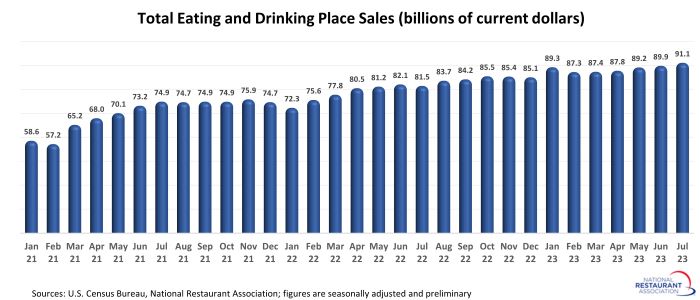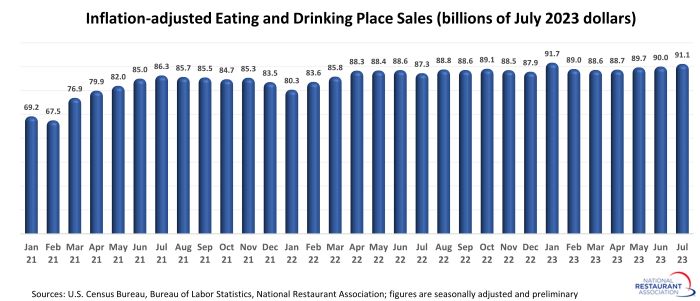Restaurant sales rose sharply in July
The resiliency of the U.S. consumer was on full display in July, as restaurant sales posted a healthy gain.
Eating and drinking places* registered total sales of $91.1 billion on a seasonally adjusted basis in July, according to preliminary data from the U.S. Census Bureau. That was up a strong 1.4% from June’s sales volume, which was revised higher from preliminary readings.
July represented the third consecutive month of solid restaurant sales growth, with revised data revealing a clear upward trend leading into the summer months. July’s healthy increase came on the heels of robust gains in both May (1.6%) and June (0.8%).
It wasn’t just restaurants that benefitted from consumers’ continued willingness to spend. Total sales in non-restaurant retail sectors rose 0.6% in July – the strongest monthly increase since January.

The recent upward trend in restaurant sales was even more impressive considering that it occurred during a period of slowing menu-price growth. In other words, sales growth wasn’t primarily driven by higher menu prices, as it was for much of the past year.
After adjusting for menu price inflation, eating and drinking place sales were up 4.4% between July 2022 and July 2023. Despite the uptick in real sales growth, July’s sales volume remained below January’s reading in inflation-adjusted terms.

*Eating and drinking places are the primary component of the U.S. restaurant and foodservice industry, which prior to the coronavirus pandemic generated approximately 75% of total restaurant and foodservice sales. Monthly sales figures presented above represent total revenues at all eating and drinking place establishments. This differs from the National Restaurant Association’s sales projections, which represent food and beverage sales at establishments with payroll employees.
Read more analysis and commentary from the Association's chief economist Bruce Grindy.